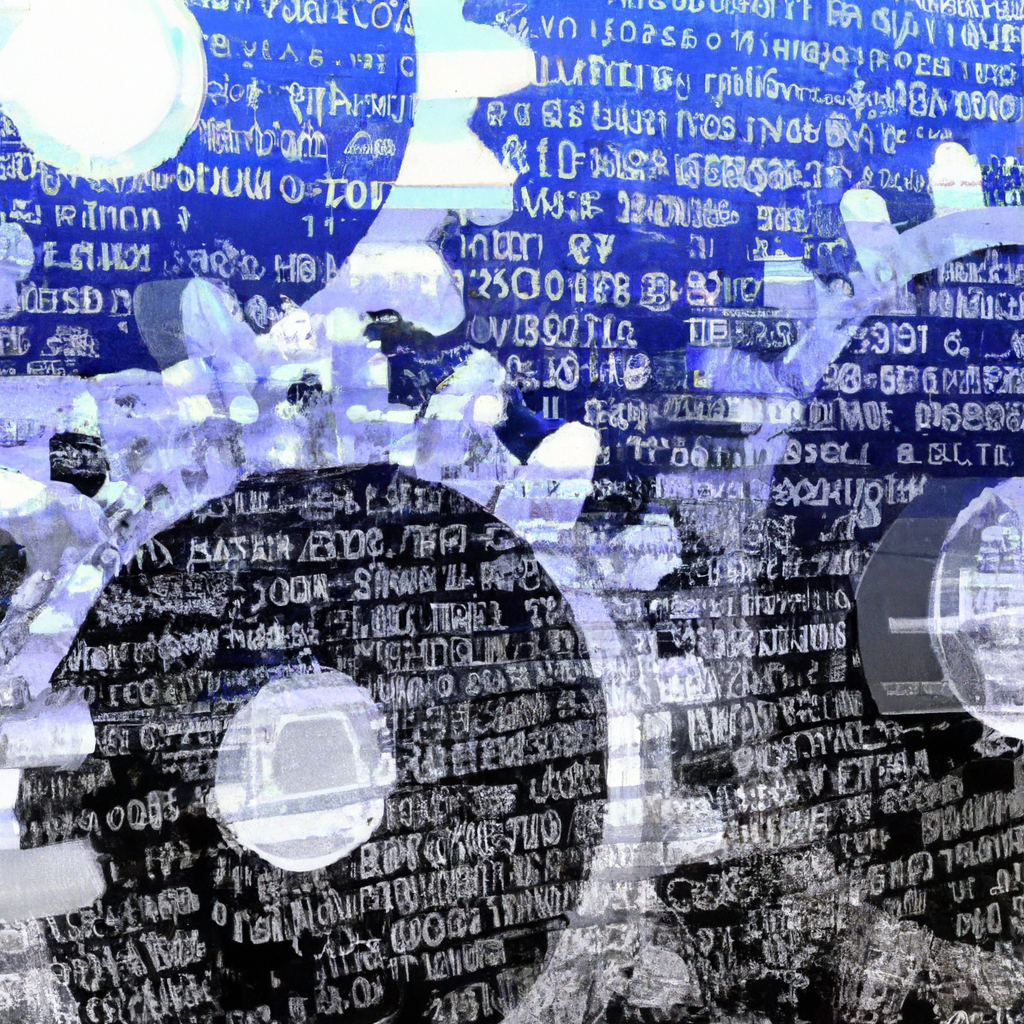Have you ever wondered about the difference between AI and machine learning? Although these terms are often used interchangeably, they actually have distinct meanings. AI, or Artificial Intelligence, refers to the broad field of computer science that aims to create machines capable of imitating human intelligence. On the other hand, machine learning is a subset of AI that focuses specifically on algorithms and statistical models that enable computers to learn and make predictions without being explicitly programmed. So, while AI encompasses many aspects of computer intelligence, machine learning is a particular approach within that field. Let’s explore the fascinating distinctions between these two concepts and gain a deeper understanding of their roles in our increasingly advanced technological world.
Definitions
AI definition
Artificial Intelligence (AI) refers to the simulation of human intelligence in machines that are programmed to think, learn, and problem-solve like humans. It encompasses a wide range of capabilities, including speech recognition, decision-making, problem-solving, and perception. AI aims to create systems that can mimic human intelligence and perform tasks that would typically require human intelligence.
Machine Learning definition
Machine Learning is a subset of AI that focuses on the development of algorithms and techniques that allow machines to learn from and make predictions or decisions based on data, without being explicitly programmed. It is about creating programs and models that can automatically improve and adapt their performance through experience. Machine Learning enables computers to learn, analyze patterns, and make informed decisions without being explicitly programmed for every possible scenario.
Concept
AI concept
The concept of AI revolves around creating machines or systems that can perform tasks that would typically require human intelligence. These tasks can range from recognizing speech and images to understanding natural language and even making decisions. AI algorithms are designed to process large amounts of data, learn from it, and make intelligent decisions or predictions based on that data. The ultimate goal of AI is to develop systems that can think, reason, and learn like humans.
Machine Learning concept
Machine Learning, as a concept, focuses on developing algorithms and techniques that allow machines to automatically learn and improve from experience. It is based on the idea that machines can analyze and recognize patterns in data, and use that knowledge to make predictions or decisions without explicit programming for each scenario. Machine Learning algorithms can adjust and adapt their models based on new data, allowing them to improve their performance over time.

Approach
AI approach
The approach to AI involves creating algorithms and systems that replicate human intelligence by feeding them with relevant data and providing them with the ability to learn from that data. AI systems use various techniques such as neural networks, deep learning, and natural language processing to process and understand information. The approach to AI often involves creating complex algorithms and models that can simulate human-like thinking and decision-making processes.
Machine Learning approach
Machine Learning takes a more specific approach by focusing on algorithms that can automatically learn and improve from data without being explicitly programmed for each task. Machine Learning models are trained on data, and they make predictions or decisions based on patterns and features observed in that data. The approach to Machine Learning involves selecting appropriate algorithms, feeding them with training data, and fine-tuning the models to optimize their performance.
Scope
AI scope
The scope of AI is vast and encompasses a wide range of applications across various industries and sectors. AI systems can be designed to perform tasks such as speech recognition, natural language processing, image recognition, data analysis, and even autonomous decision-making. The scope of AI extends to fields like healthcare, finance, transportation, manufacturing, and many others, where intelligent systems can provide valuable insights, automate processes, and assist humans in decision-making.
Machine Learning scope
Machine Learning has a narrower scope compared to AI, as it specifically focuses on developing algorithms and techniques that enable machines to learn and make predictions or decisions based on data. Machine Learning algorithms can be applied to various domains, including healthcare, finance, marketing, and customer service, to name a few. The scope of Machine Learning lies in training models on large datasets and using them to analyze data, identify patterns, and make accurate predictions or decisions.

Functionality
AI functionality
AI systems are designed to perform various tasks and functions that require human-like intelligence. These systems can process and analyze large volumes of data, recognize patterns, understand natural language, and make predictions or decisions based on that information. AI functionality can include tasks such as speech recognition, image recognition, natural language processing, and even autonomous decision-making. The functionality of AI systems can be customized and tailored to specific domains or industries, allowing them to provide specific functionalities and solutions.
Machine Learning functionality
Machine Learning algorithms and models are designed to automatically learn from data and perform specific tasks without explicit programming. Their functionality lies in their ability to analyze data, identify patterns, make predictions, and facilitate decision-making. Machine Learning models can be trained on large datasets to perform tasks such as fraud detection, customer segmentation, sentiment analysis, recommendation systems, and many others. The functionality of Machine Learning systems is focused on their ability to process data, learn from it, and provide actionable insights or predictions.
Dependency
AI dependency
AI systems often rely on large amounts of data to train models and improve their performance. The dependency of AI lies in the availability and quality of data, as well as the computing power required to process and analyze that data. Additionally, AI systems may require specialized algorithms, frameworks, or libraries to implement specific functionalities. The dependency on data, computing resources, and advanced algorithms is crucial for the successful development and deployment of AI systems.
Machine Learning dependency
Similar to AI, Machine Learning algorithms heavily rely on data to train models and make accurate predictions or decisions. The dependency of Machine Learning lies in the availability of large and diverse datasets that represent the problem domain adequately. Machine Learning models also rely on well-defined features and appropriate feature engineering to extract meaningful information from the data. Furthermore, the dependency on computing resources and suitable Machine Learning libraries or frameworks is essential to implement and deploy Machine Learning algorithms effectively.

Applications
AI applications
AI has a wide range of applications across numerous industries, bringing significant advancements and improvements to various domains. In healthcare, AI is used for medical image analysis, patient diagnosis, and personalized treatment recommendations. In finance, AI is employed for fraud detection, algorithmic trading, and risk assessment. AI is also utilized in autonomous vehicles, virtual personal assistants, smart homes, and customer service bots. The applications of AI are diverse, and they continue to expand as technology progresses and new possibilities emerge.
Machine Learning applications
Machine Learning has found applications in diverse fields, revolutionizing industries and enhancing decision-making processes. In healthcare, Machine Learning is used for predicting disease outcomes, drug discovery, and personalized medicine. In marketing, it is utilized for customer segmentation, recommendation systems, and targeted advertising. Machine Learning also plays a crucial role in natural language processing, image recognition, autonomous vehicles, and predictive maintenance. The applications of Machine Learning are widespread and continue to grow as organizations recognize the potential for data-driven insights and automation.
Data Handling
AI data handling
AI systems rely on structured and unstructured data to process, learn, and make informed decisions. Data handling in AI involves collecting, preprocessing, and cleaning data to ensure its quality and relevance for training AI models. AI systems can handle large volumes of data, analyzing patterns and establishing correlations to extract meaningful insights. Data handling in AI also requires privacy and security measures to protect sensitive information and comply with regulations. AI systems can handle various data types, including text, images, audio, and video, providing flexibility in processing different types of information.
Machine Learning data handling
Data handling in Machine Learning is a critical aspect of training models and achieving accurate predictions or decisions. Machine Learning algorithms require labeled training data or historical datasets to learn from and generalize patterns. Data preprocessing, which involves cleaning, transforming, and normalizing data, is also necessary to ensure its quality and suitability for training. Machine Learning models can handle structured and unstructured data, depending on the specific requirements of the task. Proper data handling is crucial in Machine Learning to avoid biases, overfitting, and other challenges that can affect the performance and reliability of the models.

Human-Like Decision Making
AI human-like decision making
AI aims to replicate human-like decision-making processes by analyzing data, recognizing patterns, and making informed choices or predictions. AI systems can process vast amounts of data, identify complex relationships, and use that knowledge to perform tasks that typically require human intelligence. Human-like decision-making in AI involves reasoning, problem-solving, and adapting to new or unknown situations. AI systems can mimic human decision-making by considering multiple factors, evaluating trade-offs, and making choices based on predefined criteria or optimization functions.
Machine Learning human-like decision making
Machine Learning algorithms facilitate human-like decision-making by learning and adapting from data to make predictions or decisions. These algorithms analyze patterns and features in data, enabling them to recognize similarities or anomalies and generalize from training examples. Though Machine Learning does not possess consciousness or emotions like humans, it can provide insights and predictions that align with human decision-making processes. Machine Learning models can capture complex relationships in data, enabling them to make informed decisions or recommendations based on learned patterns.
Complexity
AI complexity
AI can involve complex algorithms and models that attempt to simulate various aspects of human intelligence. The complexity in AI lies in creating systems that can understand and interpret data, reason, learn, and adapt to new situations. Developing advanced AI algorithms, such as deep learning or neural networks, requires expertise in mathematics, statistics, and computer science. The complexity of AI also extends to the design and implementation of intricate architectures that can handle complex tasks and process large amounts of data efficiently.
Machine Learning complexity
Machine Learning algorithms can be complex, especially when dealing with large and high-dimensional datasets. The complexity in Machine Learning lies in selecting appropriate algorithms, tuning model parameters, and addressing challenges like overfitting or data bias. Machine Learning models often require substantial computing power and memory to handle large datasets and perform sophisticated calculations. Moreover, the complexity of Machine Learning extends to feature engineering, where domain knowledge and expertise are crucial to extract meaningful features from the data.










